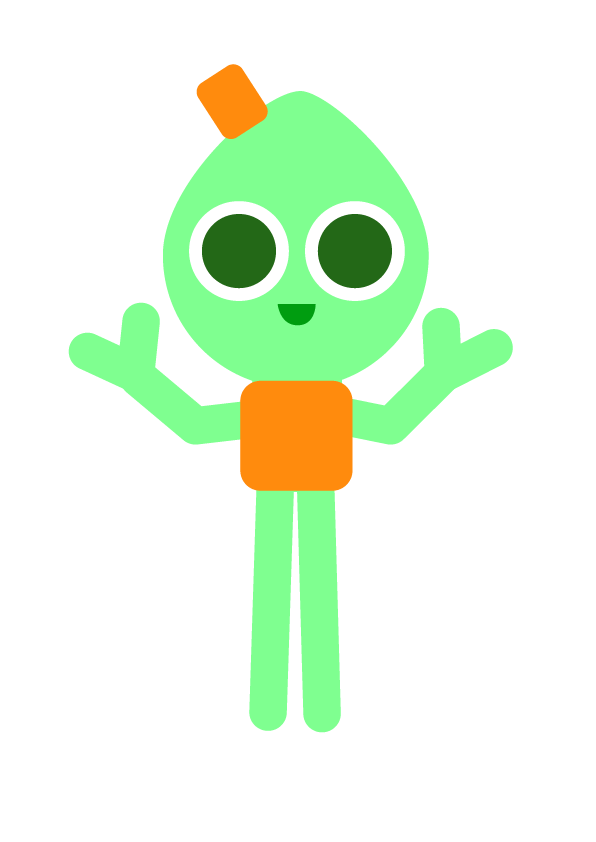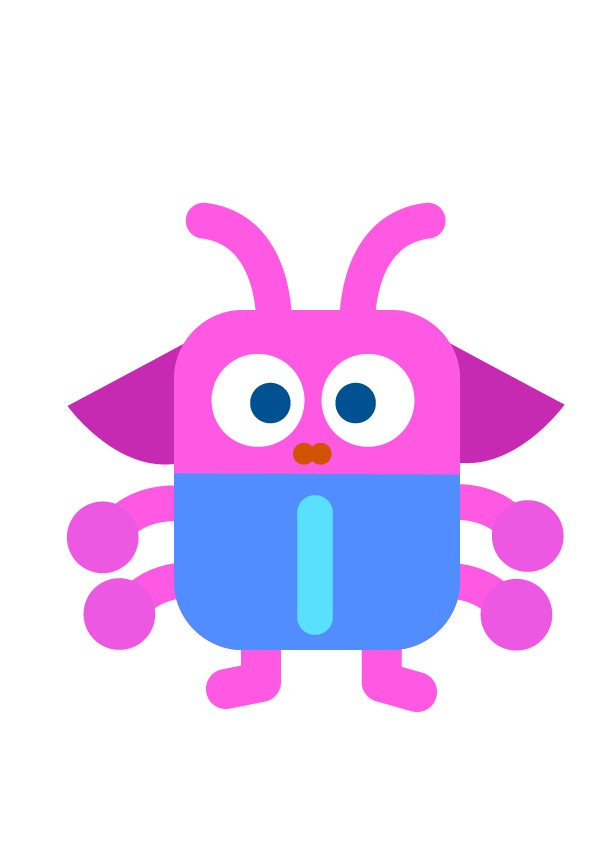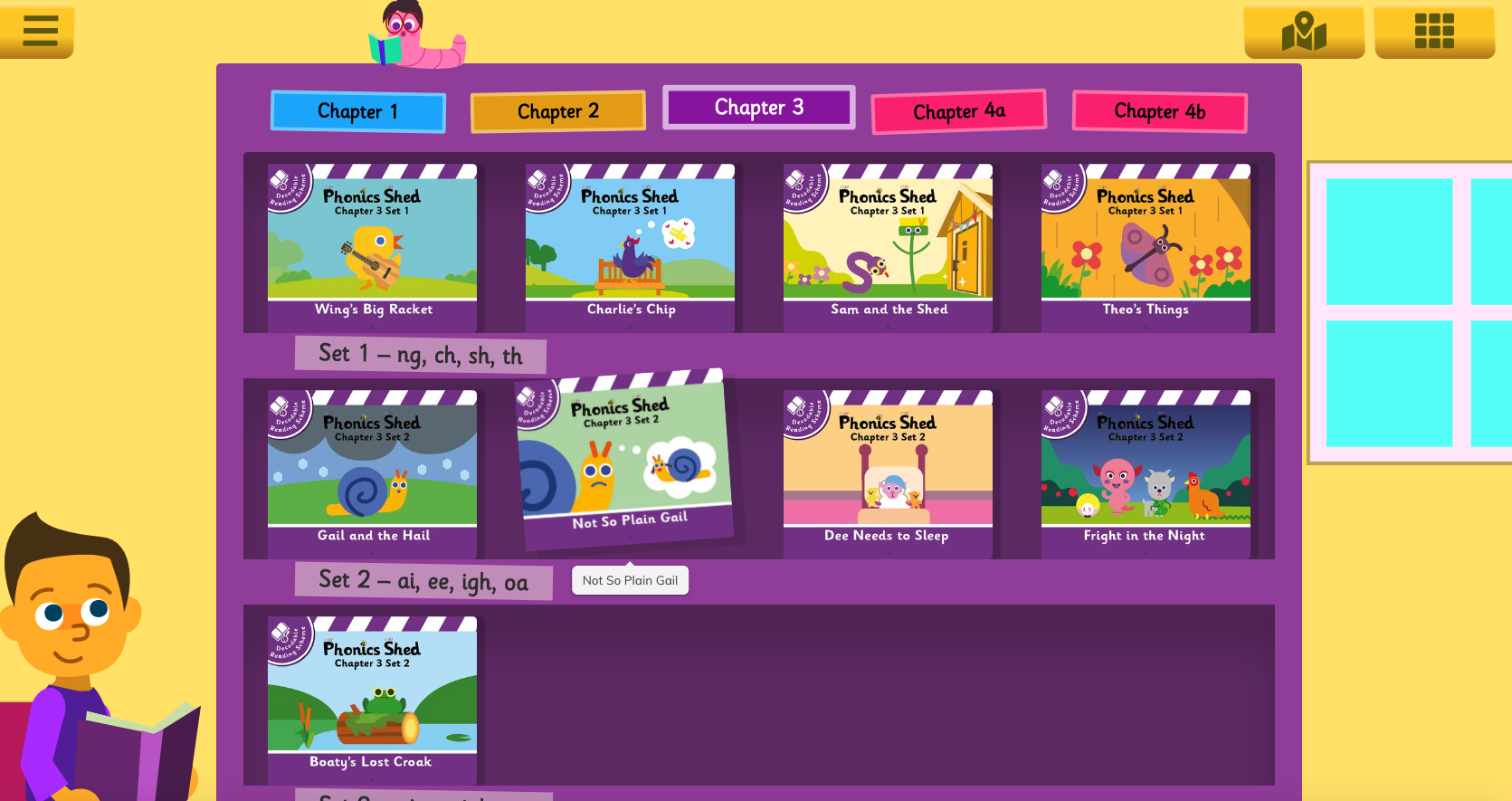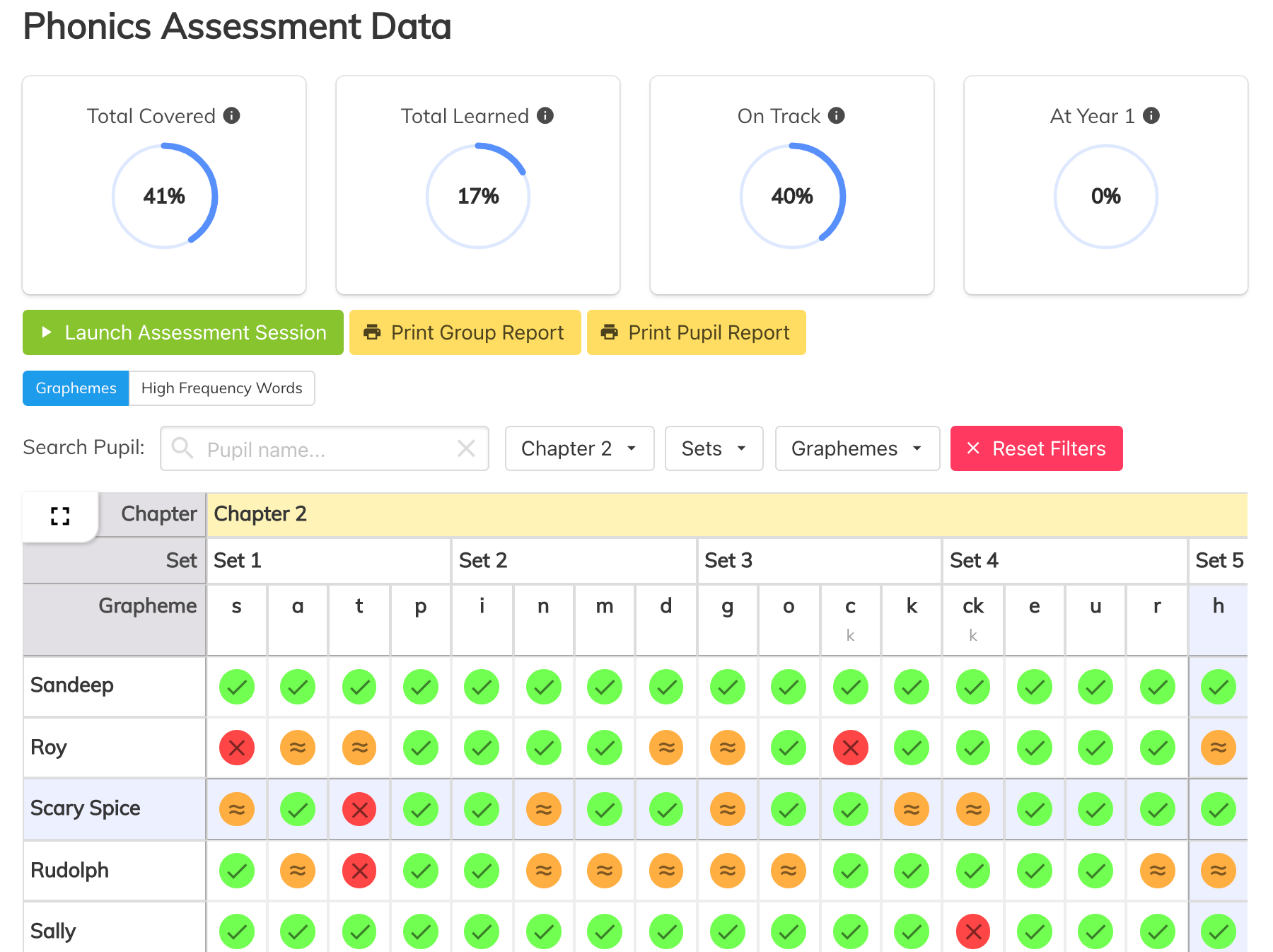PHONICS SHED CORE CURRICULUM
While the SOR research confirms that systematic and explicit phonics instruction is beneficial for all learners, that is only one component of becoming a proficient reader. A deeper dive into the research will illuminate the multi-faceted components that work together to develop reading skills. The literature and interpretation of its findings do have a strong emphasis on the importance of teaching phonics, because without building that solid foundation first, other reading skills of fluency, comprehension, and vocabulary are much harder to acquire.
Phonics Shed provides opportunities for children to build strong foundational phonics skills and also incorporates other critical components, such as comprehension, vocabulary, and spelling, to help become more proficient readers. This program was designed to be a stand-alone curriculum for effective and engaging phonics instruction and practice.
The Core Curriculum includes original stories and rich texts with robust vocabulary. There are also comprehension questions at the end of every story and decodable book. Encoding is included in daily lessons and the additional Spelling Shed component allows children to dive deeper into encoding/spelling practice that is aligned with the phonics curriculum.
Explicit and Systematic Instruction
The curriculum aligns with Science of Reading research and enables children to become fluent readers and writers. The program is designed to run from Pre-K to 2nd grade, but it can extend into upper grades as well, to help fill gaps for those children who need further support in phonics. The Phonics Shed Core program is available with both physical and digital resources, or we also provide a digital-only version.
Core Full - Physical Resources
- Character story books
- Decodable readers
- Character (phoneme/grapheme) flashcards
- High-frequency word flashcards
- Teacher's Manual
- Puppet Joe
Core Digital Resources
- Access to Phonics Shed Digital (games, assessment, progress monitoring)
- Digital Flashcard tool (graphemes & high-frequency words)
- E-books
- Original Songs (printable and video format)
- Guidance Videos and Documents
- Downloadable Daily Lesson plans
- Printable supporting resources
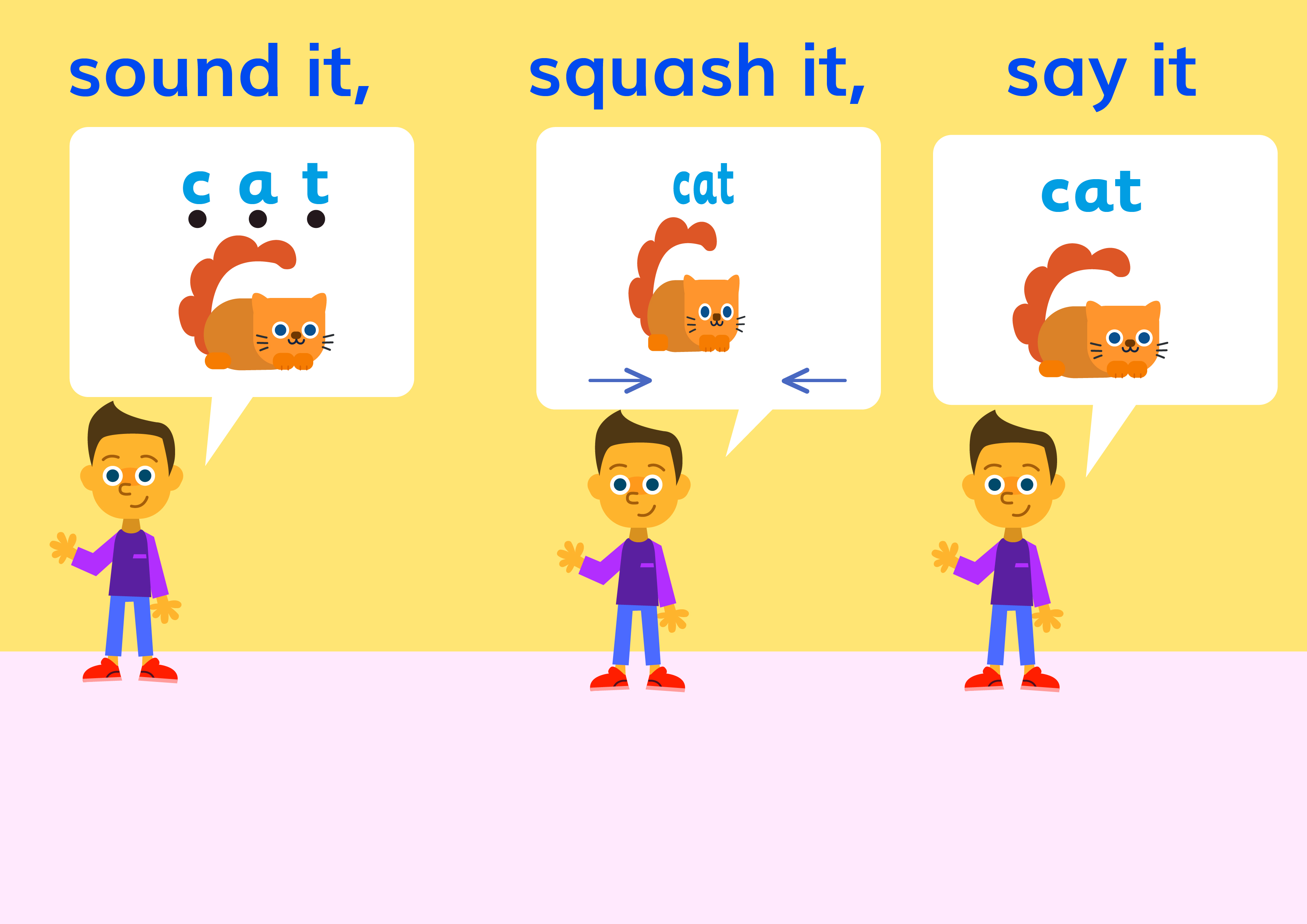
Phonics Shed Core builds phonemic and phonological awareness and provides strategies to decode words by teaching links between letters and the sounds they can represent; this is called Phoneme-Grapheme Correspondence. Even after the shift to decoding text occurs, intentional phonological awareness activities continue to weave throughout the lessons in all the chapters.
Phonics Shed begins the journey into fluent reading and writing by laying down a strong foundation of pre-reading and listening skills. Children are taught to explore, identify, and distinguish sounds, strengthening phonological awareness skills. The curriculum progresses to more structured (phonological) blending and segmenting strategies that are used to teach children to recognize and work with sounds in spoken language. Children are taught to blend sounds together to make words by using the 'Sound it, Squash it, Say it' technique. Reversley, they are taught to segment words into sounds by using the 'Say it, Stretch it, Sound it' method. Phonics Shed aligns with the existing Spelling Shed program to ensure a smooth transition between decoding and encoding.
Phonics Shed's fast-paced progression includes flexible planning that is easily adapted to a slower pace if needed, to support individual needs. There are additional targeted intervention lesson plans to help close the gaps and support struggling learners.
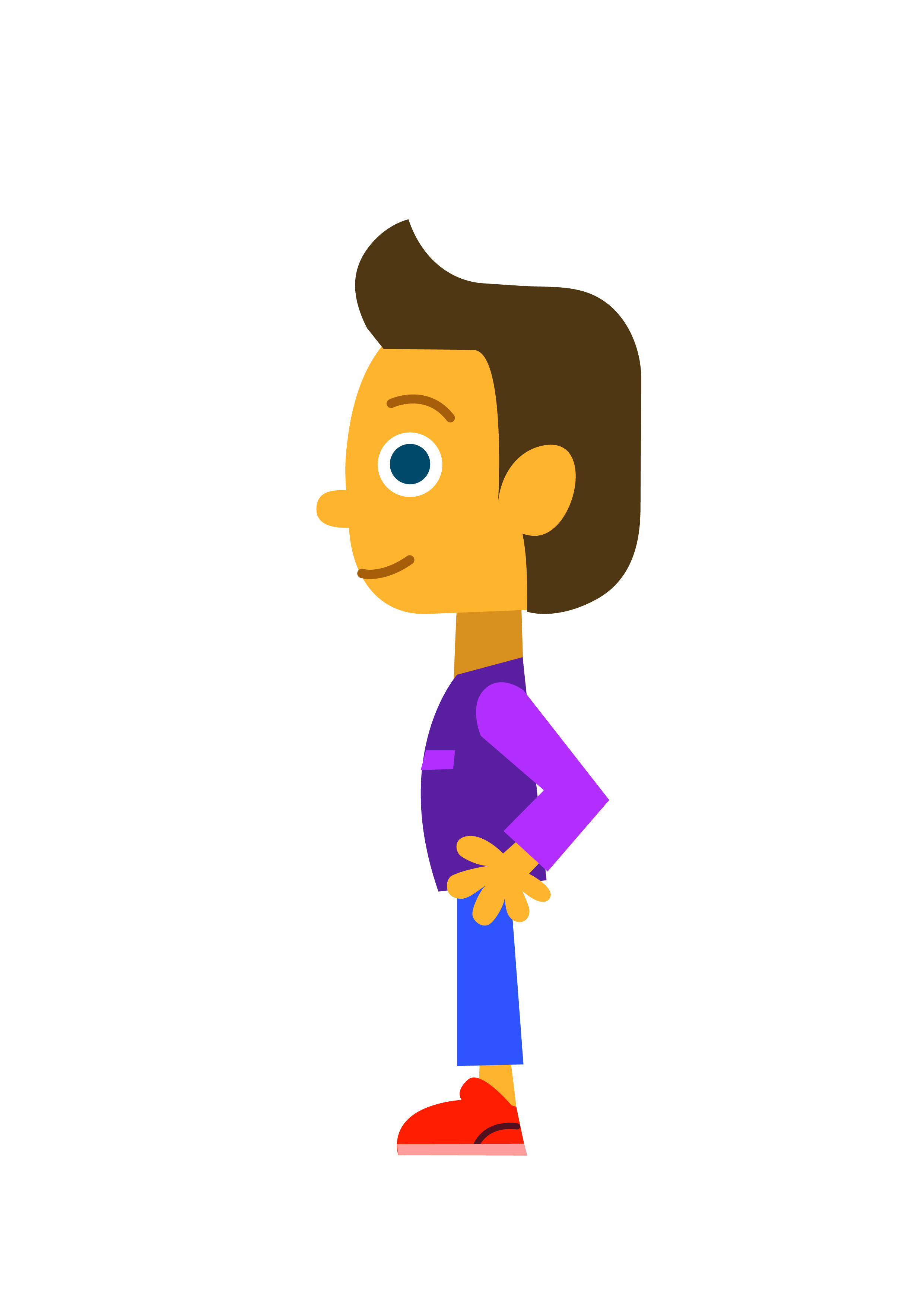

Phonics Shed also aims to foster a love of reading and writing through its strong, character-based, and original narratives and with engaging, multi-sensory activities. Joe is the first character the children will meet, and he is a key figure throughout the progression who acts as a guide from the very beginning, right through to the later chapters.
Throughout Chapters 2-4, there are 110 phoneme-grapheme correspondences (including upper and lowercase letters, double letters, digraphs/trigraphs, and more advanced phonemic patterns) covered in the progression, each having a unique character linked to it. Additionally, the characters have their own supporting stories, decodable readers, songs, and associated actions (physical movements) to aid with consolidation.
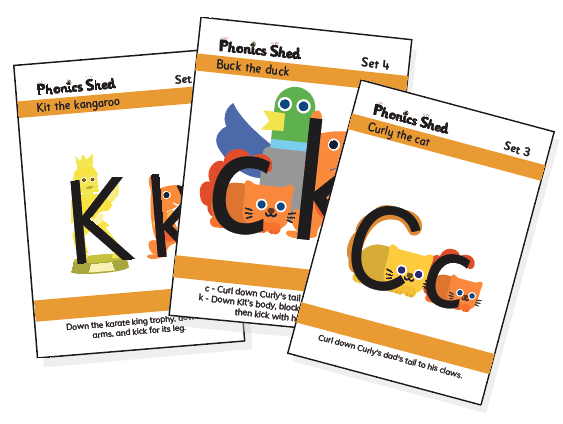
The 26 letters of the alphabet have upper and lowercase characters, each with an easy-to-follow letter formation rhyme to support the children's writing. The same characters are referenced throughout the curriculum and are known as 'special friends' to the digraph and trigraph characters. They appear on most of the digraph/trigraph flashcards, and often in their stories, to support consistent letter formation and to reinforce that they sometimes work together to help to represent certain sounds.
Chapter 1 Pre-K / Kindergarten
Focuses on developing vital pre-reading speaking and listening skills. It is divided into a two week introduction and nine interlinking Elements, each with a week worth of planning and intervention lessons. SAMPLE PLANNING
- Introduction - Joe: An Introduction to Phonics Shed
- Element 1 - Environmental Sounds
- Element 2 - Motor Skills
- Element 3 - Our Bodies
- Element 4 - Instrumental Sounds
- Element 5 - Our Voices
- Element 6 - Stories Rhymes and Rhythm
- Element 7 - From Left to Right
- Element 8 - Initial Sounds
- Element 9 - Beginning to Blend and Segment
Chapter 2 Kindergarten
Introduces the first phoneme-grapheme pairs, including introducing the 26 letters of the alphabet, their corresponding capital letters, several digraphs (‘ck’ /k/, double letters, an [optional] extended range of double letters), plus ‘qu’. It also begins to introduce the concept of ‘best fit’ (spelling generaliztions); making an informed choice between alternative phoneme-grapheme pairs, based on the most common placement in words. SAMPLE PLANNING
Phoneme-Grapheme Pairs & Characters
- Set 1 – 's'/s/, 'a'/a/, 't'/t/, 'p'/p/: Sam the snake [unvoiced s], Anna the ant, Tom the tiger, and Pat the pig
- Set 2 – 'i'/i/, 'n'/n/, 'm'/m/, 'd'/d/: Indy the imp, Noah the nurse, Monty the monkey, and Dusty the dog
- Set 3 – 'g'/g/, 'o'/o/, 'c'/k/, 'k'/k/: Grey the goat, Ollie the otter, Curly the cat, and Kit the kangaroo
- Set 4 – 'ck'/k/, 'e'/e/, 'u'/u/, 'r'/r/: Buck the duck [first digraph], Edwin the Elf, Ugbie the bug, and Rex the rat, /u/
- Set 5 – 'h'/h/, 'b'/b/, 'f'/f/, 'l'/l/: Haz the hen, Bumble the bee, Flick the fly, and Lily the ladybug
- Set 6 – 'j'/j/, 'v'/v/, 'w'/w/, 'x'/ks/: Jack the jungle explorer, Val the vet, Wes the weasel, and Alex the fox
- Set 7 – 'y'/y/, 'z'/z/, 'qu'/kw/, voiced 's'/z/: Yan the yoga teacher, Eliza the zebra, Quinn the quail, and revisiting Sam the snake as ‘voiced ‘s’ /z/
- Set 8 – Double Letters 'ff'/f', 'll'/l/, 'ss'/s/, 'zz'/z/: Muffin the puffin, Billy the bull, Jess the grasshopper [including voiced ‘s’s], and Fizz the buzzard
- Set 8 continued – Additional Doubles 'tt'/t/, 'pp'/p/, 'rr'/r/, 'mm'/m/, 'cc'/c, 'nn'/n, 'dd'/d/, 'gg'/g/, 'bb'/b/: Lottie the bottle, Pepper the hippo, Barry the parrot, Jimmy the hammer, Rebecca the broccoli, Bonny the bunny, Eddy the ladder, Peggy the egg, and Robby the gibbon
- Set 9 - Alphabet Order (no new characters introduced)
- Set 10 - Vowels and Consonants (no new characters introduced)
Chapter 3 1st grade
Progresses to more complex digraphs and trigraphs, and introduces more ‘Best Fit’ generalizations as children begin to spell longer words and write captions and sentences. By the end of Chapter 3, the children will be taught all of the most common phoneme-grapheme correspondences. SAMPLE PLANNING
Phoneme-Grapheme Pairs & Characters
- Set 1 - Recap Ch. 2 Phoneme-Grapheme Correspondences (no new characters introduced)
- Set 2 - Recap Ch. 2 Alphabet Order; Vowels & Consonants (no new characters introduced). Open/Closed Syllables Introduced
- Set 3 - ng, ch, sh, th [voiced and unvoiced]: Wing the duckling, Charlie the chicken, Blush the brush, Theo the moth, and The Weatherman [including a comparison between th sounds]
- Set 4 - Split Digraphs: a_e, i_e, o_e: Jade the spade, Mike the kite, Hope the cone
- Set 5 - Split Digraphs: e_e, u_e /yoo/, u_e /oo/: Pete the millipede, Tribute the mule, and Luke the flute
- Set 6 - c /s/, g /j/, y /igh/, y /ee/: Nancy the princess, Gem the giraffe, Sky the spy, Cody the jellyfish
- Set 7 - ai, ee, igh, oa: Gail the snail, Dee the sheep, Bright the night-light, and Boaty the toad
- Set 8 - ay, ea /ee/, ow /oa/: Jay the clay, Beans the flea, Rainbow the snowman
- Set 9 - ar, or, wh: Archer the star, Gordon the horse, Wheeler the whale
- Set 10 - er, ir, ur: Merlin the gerbil, Shirley the girl, Kurt the turtle
- Set 11 - oi, oy, oo (long and short): The coin in the soil, Troy the boy, Boo the goose, Sherwood the woodpecker
- Set 12 - ow, ou /ow/, aw, au: Brown the owl, Sprout the mouse, Dawn the fawn, Paul the astronaut
- Set 13 - ph, kn, wr: Phil the dolphin, Knox the knight, Wrigley the wren
Chapter 4 2nd grade
Chapter 4 covers more advanced phonemic patterns, alternative graphemes for known phonemes, and utilizes more ‘Best Fit’ generalizations.
Phoneme-Grapheme Pairs & Characters
- Set 1 - Recap Ch.3 [Part 1]: Set 2-7 (no new characters introduced)
- Set 2 - Recap Ch.3 [Part 2]: Set 8-13 (no new characters introduced)
- Set 3 - ey /ee/, ie /ee/, ie /igh/, oe /oa/: Stanley the turkey, Albie the cookie thief, The magpie, Joe stubbed his toe
- Set 4 - ear, air, ure: Ears the earwig, Blair the fairy, The treasure adventure
- Set 5 - ew /oo/, ew /yoo/, ue /yoo/, ue /oo/: Drew the screwdriver, Mount Spew is askew, Huey the statue, Sue the bluebird
- Set 6 - i /igh/, u /yoo/, e /ee/, o /oa/, a /ai/: Ivor the lion, Music the unicorn, The meteor, Leo the ghost, April the angel
- Set 7 - ea /e/, or /ur/, a /o/, ey /ai/: Heather the pheasant, Wordy the bookworm, Squashy the wasp, Hey Chey squirrel
- Set 8 - o /oo/, y /i/, ch /k/, ch /sh/: Who?, Dylan the lynx, Chris the chameleon, Charlotte the chef
- Set 9 - ou /oo/, ou /yoo/, ou /oa/: Soupy the toucan, Doug in trouble, The soulful boulder
- Set 10 - ear /ur/, ear /air/, are /air/: Pearl the researcher, Pear the bear, Dare the hare
- Set 11 - New Phoneme - /zh/









